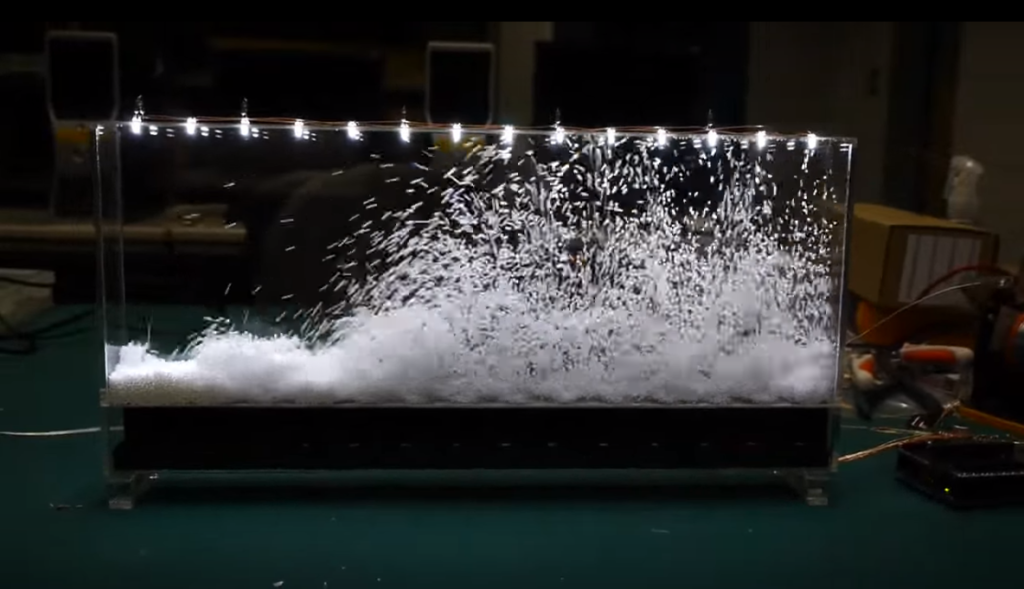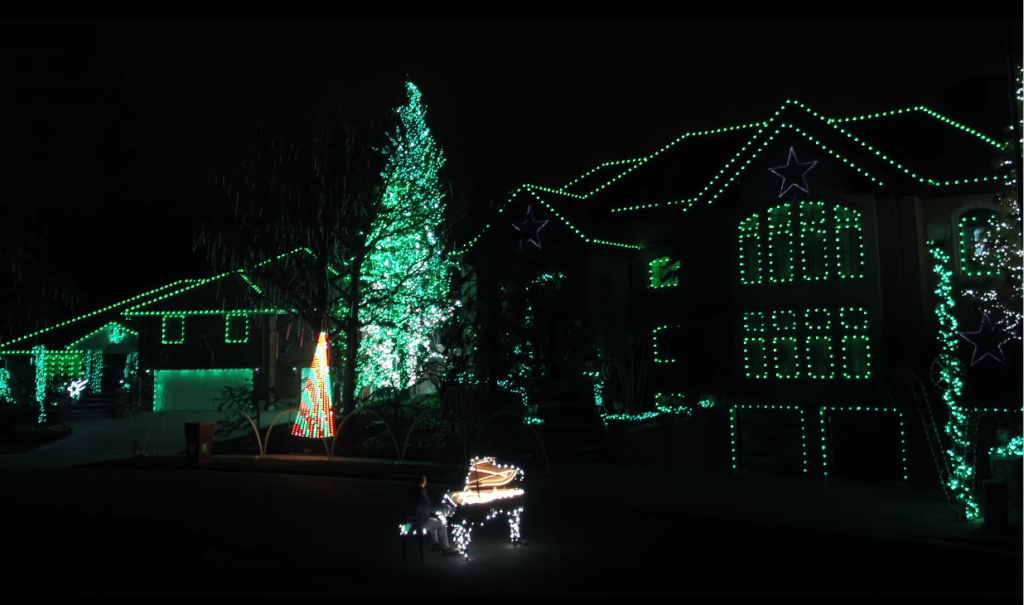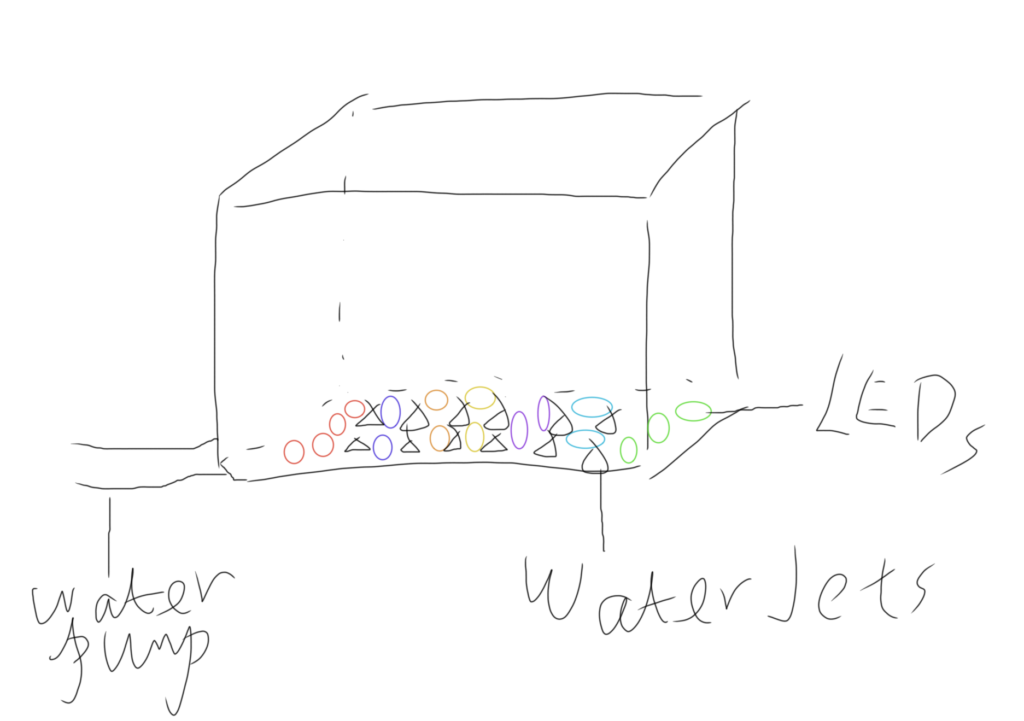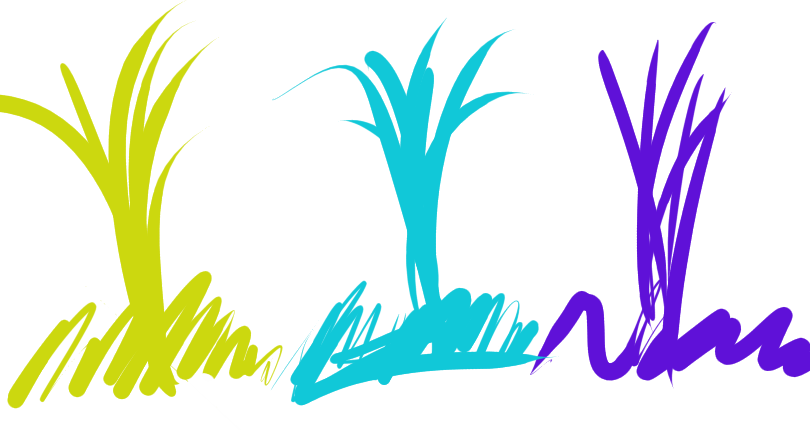Introduction
We will create a physical music visualizer which can visualize the musical notes, pitch, beats and volume by different colors of LEDs and water flow rates. Most music visualizers on the market are pre-sequenced, while ours will react to music in the real time. The meaning of this project is to allow users a new creative medium and a new way to experience old songs. We hope that through combining multiple dynamic features each experience will be new and for the user. Since interaction with the user is based solely on the user’s actions in real time we believe this fits firmly within the theme of liveness.
Novel


This work is heavily inspired by this Piano Guys music video, Color Chord by Chris Lohr, this visualizer from INCAMS, and this installation in Osaka Station City. We differentiate ourselves from these projects in a few ways. First, unlike The Piano Guys music video or the Osaka Station City installation, our system will generate patterns dynamically and in real time. Second, our combination of using water flow to represent magnitude and color to represent pitch will provide richer insight into the soundscape than any of the other projects individually. More so, our project will portable self contained structure, unlike that seen in The Piano Guys or Osaka Station.
System Architecture and Layout

The core guiding principle of our system architecture is modularity. On the software side, each step in the processing chain will have a consistent API, likely similar in design to the VST plugin API popular in digital audio workstation software. This will allow us to easily reuse common components like low-, high-, or band-pass filters, as well as components for analyzing the frequency and rhythmic content of the signal. On the hardware side, we will design a single cluster representing a “colored jet”. This water-tight module will receive power, data, and pressurized water, and output a stream of water colorized by light. These clusters will be embedded in a container containing a scavenge pump for recycling of water within the fixture, and will be connected to a control unit capable of receiving input from either a microphone of 3.5mm aux cable.
Challenges
Due to physical nature of the project, we will have to solve problems in the electromechanical and computational domains. The primary challenge in the electromechanical domain is our lack of experience with building hardware. As a specific example, we currently don’t have a concrete plan for how the fluid management system will operate.This will undoubtedly lead to a number of mistakes and missteps that more experienced engineers would avoid. On the computational side, we will face a number of challenges related to the real-time nature of the project. The most significant of these is the requirement for sophisticated digital signal processing to feed the musical analysis systems. In addition, the software will likely have to compensate for our sub-par hardware.
Audience
Our design will give users a new and excited experience about composing and listening music. Therefore, all the music lovers, artists, music composers and ourselves will be the target audience.
